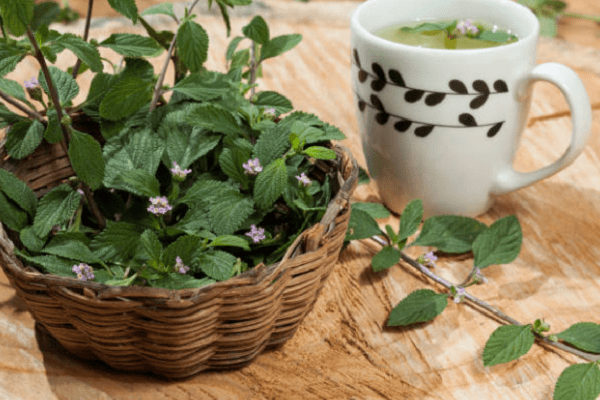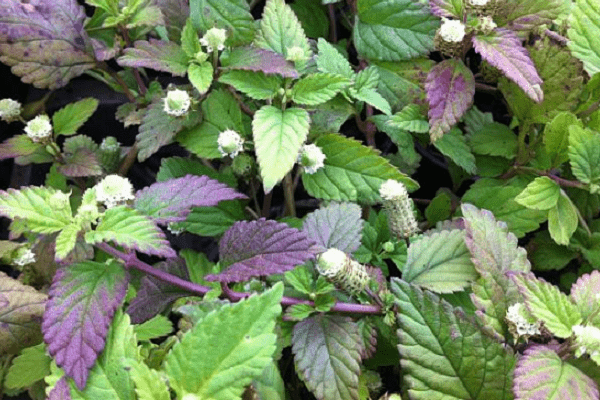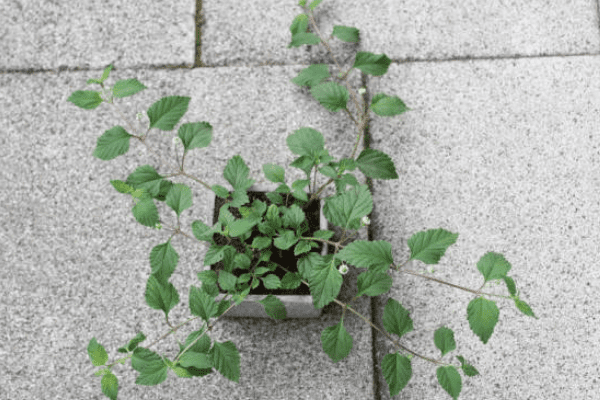Plants with a healing effect >>>> A plant that replaces sugar tea - Lippia
A plant that replaces sugar tea - Lippia.

Lippia, a plant with sugar leaves, can be easily grown at home and made into a diabetic tea drink. The botanical name of the plant Lippia is Phyla, but within its species there is a wide variety of plants that differ in aroma, edible and inedible qualities and taste. The sweet variety of Lippia is Lippia Dulcis. The high concentration of sugars in the leaves of the Lippia Dulcis plant allows the leaves to be brewed and drunk without the addition of sweeteners.
Lippia Dulcis leaf shoots can be cut, dried and harvested during periods when there is little sun. Infusion from Lippia is good in cases where excesses in sweets are not useful or are strictly prohibited. Lippia tea is an almost complete replacement for regular tea with sugar, but does not contain the calories found in sugar.
In addition to the fact that Lippia can be brewed and infused as an independent plant, it is added to infusions that are almost impossible to drink due to their unpleasant aftertaste. In fact, any herbal or floral collection with an unpleasant aftertaste will be ennobled by the participation of Lippia leaves in its composition.

Due to the fact that the plant has leaves with a pronounced sweetness, it can be added fresh to green salads, as an independent greens in vegetable and fruit salads. The shoots of Lippia Dulcis are also edible. But the sweetest parts of young shoots with leaves are cut from the middle new shoots. Young shoots of Lippia also have a sweetish flavor, but the leaves contain more sweetness.
The plant is convenient because it does not lose its sweet qualities during heat treatment: it can be added to side dishes, stew vegetables and meat with it, and stuffed with dough. Lippia's green flavors work well with less flavored green vegetables, for this reason any insipid but healthy herbal salad will acquire a distinct flavor with Lippia leaves and shoots. To enhance the taste of the leaves and shoots of Lippia, it can be slightly squeezed in a mortar so that the plant releases a little juice - it is easier to get the maximum extract from the plant for infusions and tea.
Lippia, in addition to tea or medicinal drinks, can be used in sweet preserves or marinades, in fruit drinks, in juices, in smoothies, in jelly and compotes, in jams and preserves. For these purposes, use the leaves of Lippia. Of course, Lippia will not completely replace sugar in preservation, but it will make vegetable, fruit, berry preserves or fruit - vegetable and berry drinks more useful.

The fresh leaves of the plant exude a sweetish aroma when the plant is touched, and this aroma will fill the atmosphere around the plant. The plant resembles creeping nettle leaves in appearance - it has similar carved leaves and a slight edge. The plant, in addition to useful properties, has a very decorative appearance. The plant, in addition to its beneficial qualities, blooms profusely with small flowers, which allows it to be used as an evergreen ornamental plant.
Lippia gains the highest concentration of sugars when it grows in good light and a temperature of at least 77 degrees Fahrenheit (25 degrees Celsius), but also in winter growth periods, if the plant can survive under street lighting on the windowsill, its leaves will have a sweet taste when brewed (infused).
The creeping plant of Lippia easily takes root by independently growing shoots in contact with the ground, and if it is not thinned out, or the shoots are not raised (tied up), then you can get a carpet from the plant. Lippia is easily propagated by cuttings, which can be rooted in water and planted in separate pots or containers. Since Lippia is a tropical plant in origin, it is grown at appropriate temperatures in outdoor soil as a perennial with evergreen foliage. Lippia will become the same perennial when grown indoors or on a windowsill (closed balcony). But in open ground in regions with a seasonal change in temperature regime, Lippia is grown as an annual plant, or transplanted during cold weather in a room container and continues to grow in a warm home climate all year round.
An all-season plant of open and closed ground, Lippia, has a lot of useful food and decorative properties, and deserves a place in a front garden or in a home greenhouse.

Read

Read



























